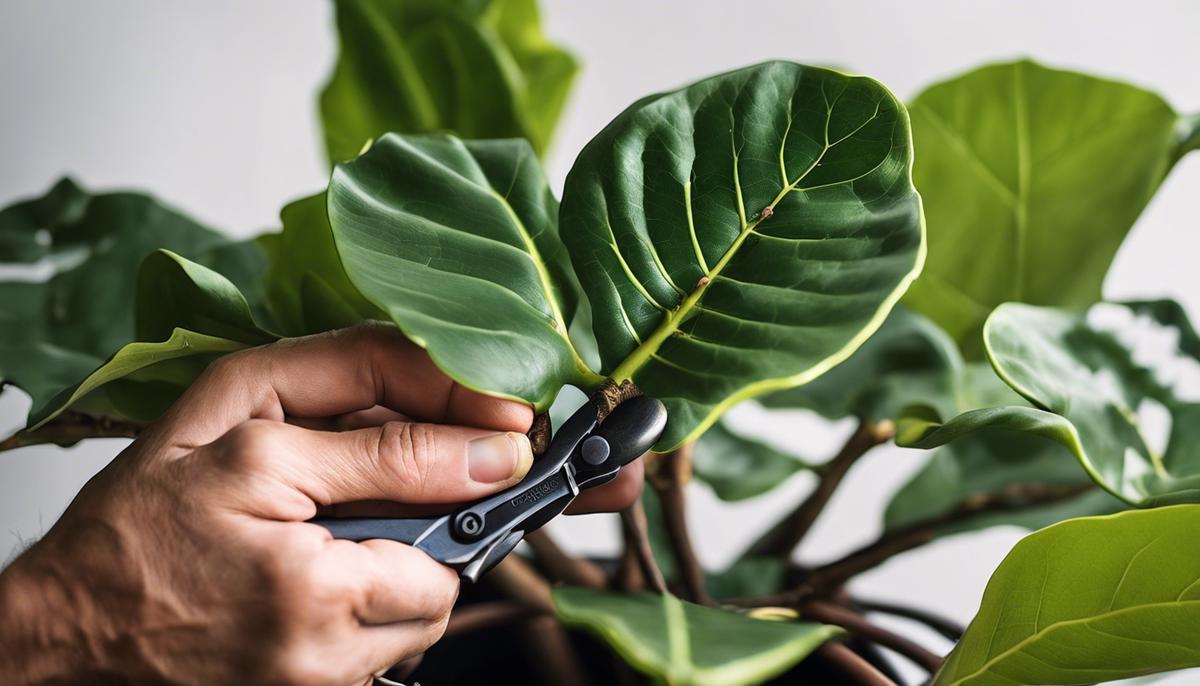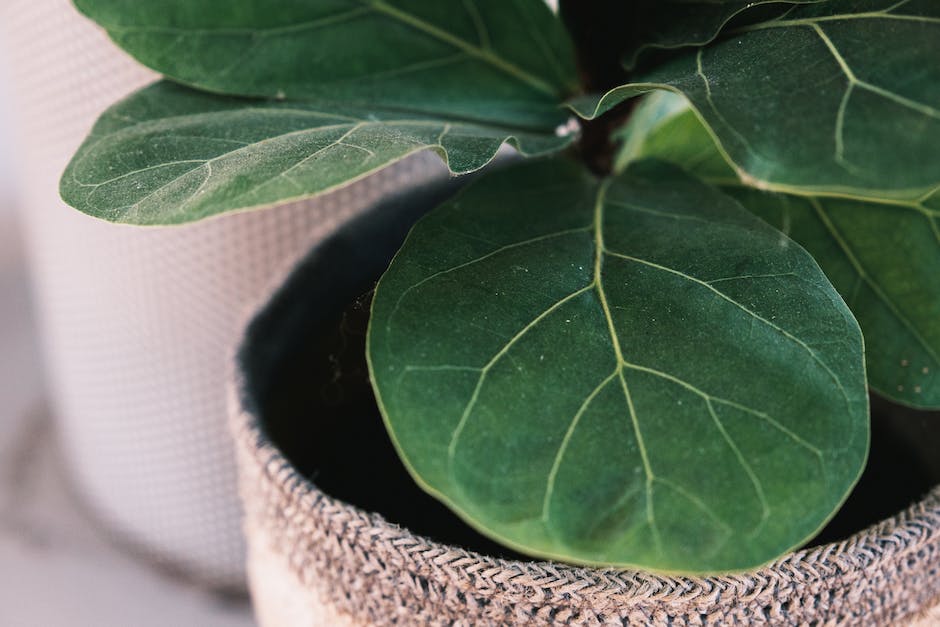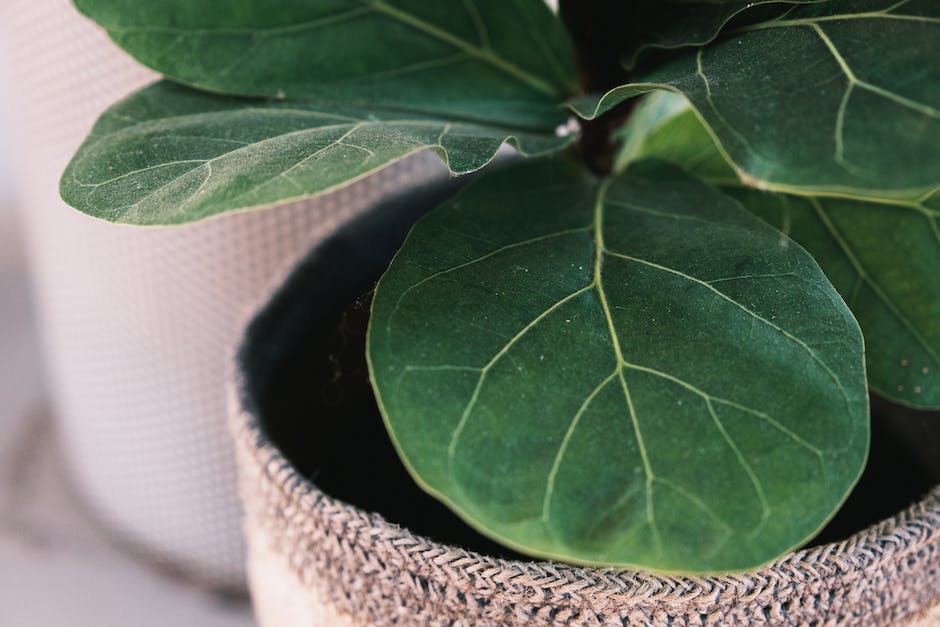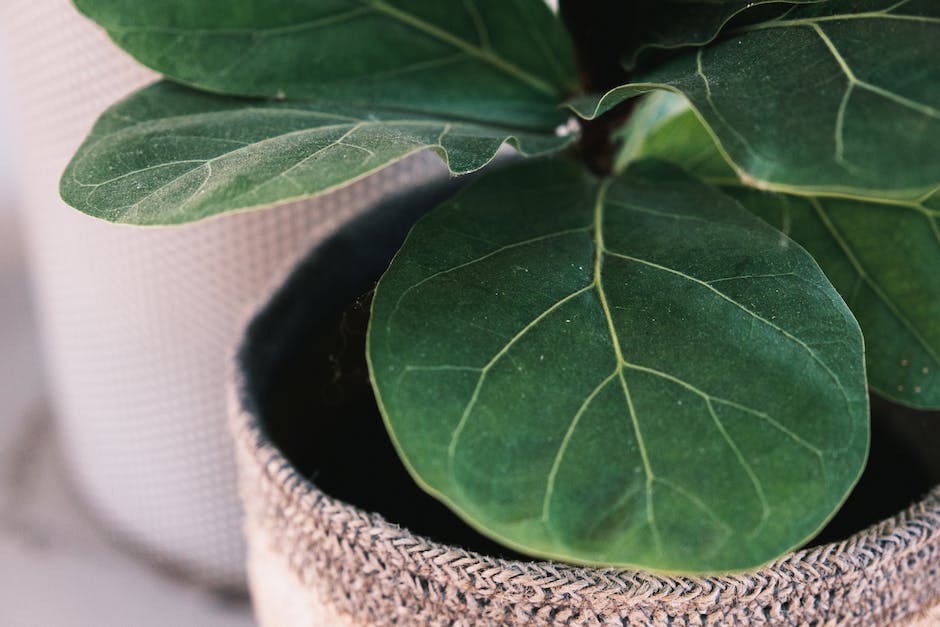Mastering Fiddle Leaf Fig Plant Pruning

Tending to indoor greenery like the fiddle leaf fig plant requires a delicate touch and a particular set of skills. It’s more than just a matter of watering it daily and placing it in a sunny spot. A significant part of plant care that many overlook is how and when to prune correctly. Pinching back unwanted or unhealthy growth promotes more robust overall plant health and aesthetically pleasing foliage. This guide will provide you with the knowledge necessary to determine the optimal time to prune your fiddle leaf fig, perform the task properly without harming it, and take good care of the trimmed plant.
Identifying when to prune
Fiddle-aficionados, gather round! Today, on our much-loved hobby portal, we delve into the entrancing universe of the Ficus Lyrata, fondly known as the Fiddle Leaf Fig plant. This verdant beauty has the power to transform your interior spaces with its grand, groovy leaves, if correctly cared for and pruned at just the right time. But when exactly is the right time to prune your leafy friend?
Our treasured Fiddle Leaf Fig doesn’t ask for too much, rather like the brilliant but subdued string instrument it’s named after. However, to keep this plant in its prime, it needs a little love and minimal grooming.
Pruning, or the strategic removal of certain parts of the plant, is one important aspect of this care, and believe it or not, timing is everything.
Remember, the main reasons to prune a Fiddle Leaf Fig are to help it maintain a desirable shape, to encourage bushier growth, and to remove any unattractive or damaging dead foliage.
Now onto the golden question – when should all this happen? Ideally, pruning is best done during the growing season for our Fiddle Leaf Fig, which typically falls between spring and early summer. This timing gives the plant a chance to heal quickly and puts it in a position to put out new growth.
But wait, these aren’t the only factors at play! Always, always inspect your plant before pruning. If you notice any wilted, brown leaves, or other signs of ill health, don’t hesitate to prune immediately, irrespective of the season. This immediate action can help prevent the further spread of diseases or pests, and help maintain your plant’s overall health.
Now, when it comes to the actual pruning process, remember to make your cuts just above a node (a small, round bump on the branch from which new leaves sprout), leave a bare stem at the top for new growth, and always use clean, sharp pruning shears to avoid infecting your plant.
So there we have it! Your Fiddle Leaf Fig will not only survive but thrive if you give it the right kind of care and pruning at the right times. Armed with this knowledge, your Fiddle Leaf Fig journey can only blossom from here. Until next time, fiddle fanciers!

Proper pruning techniques
Mastering the Art of Pruning Your Fiddle Leaf Fig
Igniting a sense of fulfillment and aesthetic pleasure, becoming adept at pruning a Fiddle Leaf Fig plant can truly elevate your indoor gardening game. Armed with knowledge, we can ensure our plant thrives, leading to the flourishing of our prized possession: the verdant, richly pigmented leaves that make Ficus Lyrata a favorite among plant aficionados. If we’re all on board, let’s trim our way to plant prosperity.
First and foremost, understanding the physical nature of your Fiddle Leaf Fig is paramount. The plant’s leaves sprout from points on the stem, known as nodes. The use of clean, sharp tools is crucial to get a crisp cut without causing harm to the plant’s tissue.
Pruning is not a random process. Instead, it is an art that requires a strategic approach. Therefore, always aim for a spot 1/4 inch above a leaf node when making a cut. This precise methodology allows the plant to heal more efficiently, ensuring a healthier growth pattern.
Flourishing Fiddle Leaf Figs command the sunlight. Hence, pruning can fuel the plant’s overall growth by enabling sunlight to reach the middle and lower portions of the plant. By shortening the branches, we can encourage the plant to thrive in width and density. It’s a fantastic way to steer the plant’s growth, making the most out of your available indoor space.
While the performance of immediate pruning for unhealthy and damaged leaves reigns supreme, something equally worth paying attention to – timing. Fiddle Leaf Figs mostly exhibit growth spurts between early spring and fall, making this the prime time for pruning. During this period, optimal healing conditions ensure your beloved plant looks its best and continues its growth at a healthy pace.
Last but not least, an essential aspect of Fiddle Leaf Fig care that pruning lays the foundation for the long-term value of plant health. Pruning encourages the plant to produce new growth, contributing to a fuller and more vibrant plant. This radiant health is a key indicator that your plant is replenishing itself effectively.
From the selection of the right tools to understanding leaf node architecture and growth patterns, each pruning session is an opportunity to deepen our understanding of our beloved Fiddle Leaf Fig. Like the ripples in a pond, each snip we make can lead to changes that give our plants a chance to shine. By mastering the art of pruning, we equip ourselves with a skill that breathes new life into our home and our hobby.
Remember, each cut we make today roots the future of our Fiddle Leaf Fig’s growth tomorrow. Happy pruning!

Aftercare of pruned plant
Let’s dive headfirst into the post-pruning care of the Fiddle Leaf Fig.
This is just as essential, if not more than the pruning process itself and has a big impact on the health and growth of your plant baby.
First things first; no watering for a week. This might sound counterintuitive, but it proves beneficial for the plant. After the pruning, the plant undergoes stress, and overwatering it during this period might overwhelm it, leading to more harm than good. Allow the plant to heal and adjust to its new size before introducing water.
Now, talking about water, might as well tackle sunlight too. Remember, the Fiddle Leaf Fig is a sunlight addict. Post-pruning, ensure to position it in a brightly lit space, but avoid direct sunlight, which can lead to scorching. Also, be aware of temperature fluctuations! The ideal temperature lies between 60-75 degrees Fahrenheit for a perfect recovery.
One thing that often gets overlooked is repotting after pruning, especially if you’re attempting aggressive pruning. The roots of this ravishing plant tend to grow along with the foliage. If the foliage is dense and large, there’s a good chance you might be dealing with a root-bound pot. A more spacious pot allows for better root growth translating to a healthier plant in return.
Another critical point to consider is the introduction of a well-rounded fertilizer. The Fiddle Leaf Fig loves a balanced, water-soluble fertilizer, particularly one with equal parts Nitrogen, Phosphorous, and Potassium. This assists in the recovery and accelerates new growth, inviting lush, green leaves.
You know the phrase, “Patience is a virtue”? Well, it was probably coined by someone nursing a pruned Fiddle Leaf Fig back to health. Frequency of care post-pruning should be increased but changes should not be rushed. Monitor the health and development of growth constantly, but don’t jump on fertilizing or adjusting light at the first sign of slow growth.
Last, but not least, groom your plant. Even after pruning, the Fiddle Leaf Fig plant might shed some leaves in stress response. The dropped leaves should be tidied away promptly, not just to maintain aesthetic pleasure, but also to keep the area sanitary and prevent any possible pest attacks.
Nail this care routine post-pruning and consider yourselves armed for the wonderful journey of nurturing hero of the indoor plant world, the gorgeous Fiddle Leaf Fig. Happy Planting!

Understanding these comprehensive plant care guidelines will pave the way for your fiddle leaf fig to flourish. Remember that every pruning activity should be purpose oriented, whether it’s encouraging a certain growth pattern or eradicating disease or pest issues. Just as each cut is calculated, post-pruning care should match this precision. Water, lighting, and temperature conditions have to be optimal, and constant vigilance is required to spot signs of distress immediately. With careful attention and dedication, you can transform your humble indoor garden into an invigorating green space brimming with healthy, pruned fiddle leaf fig plants.



